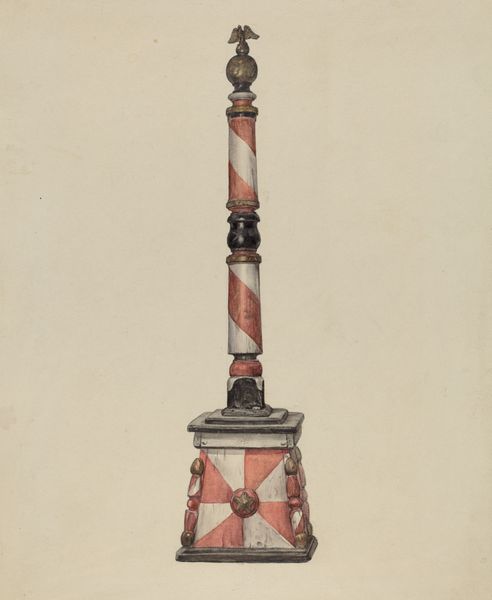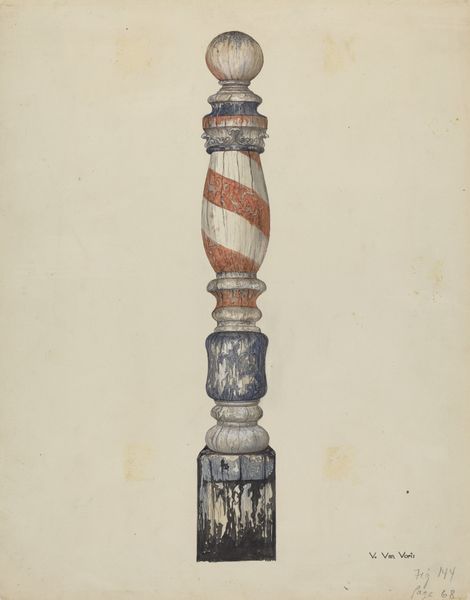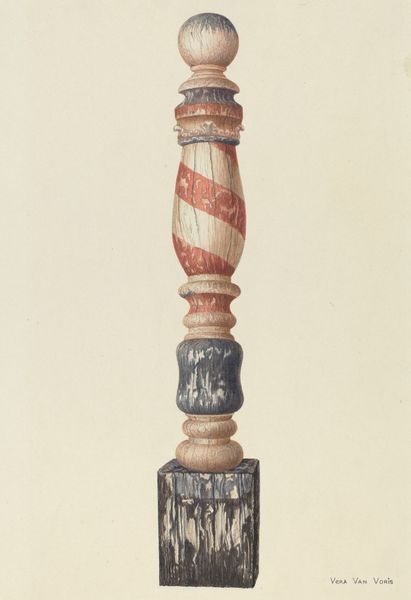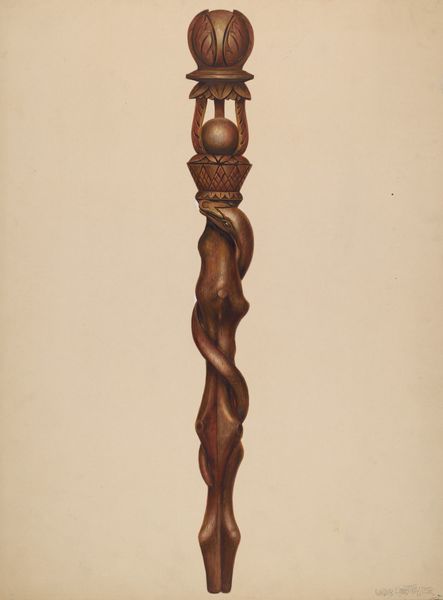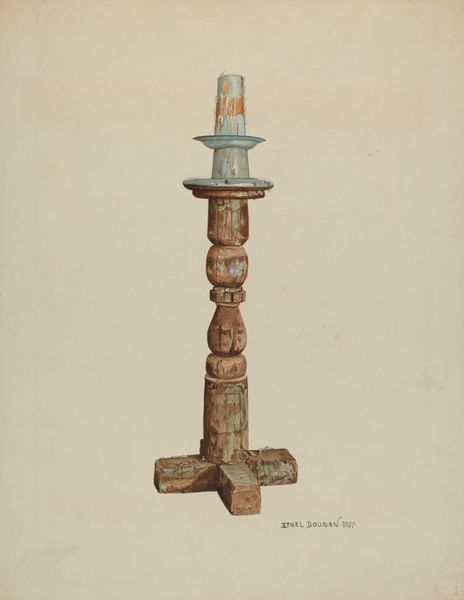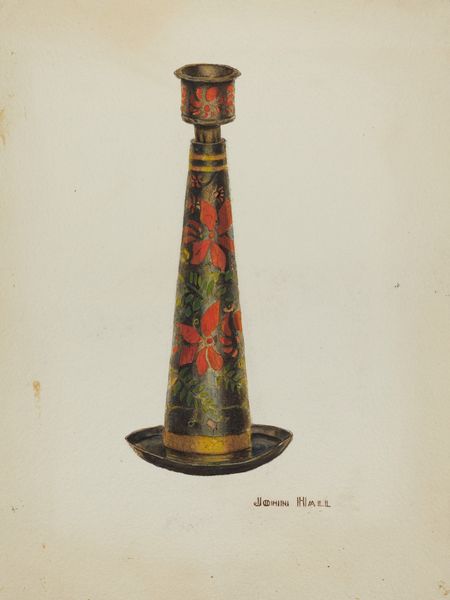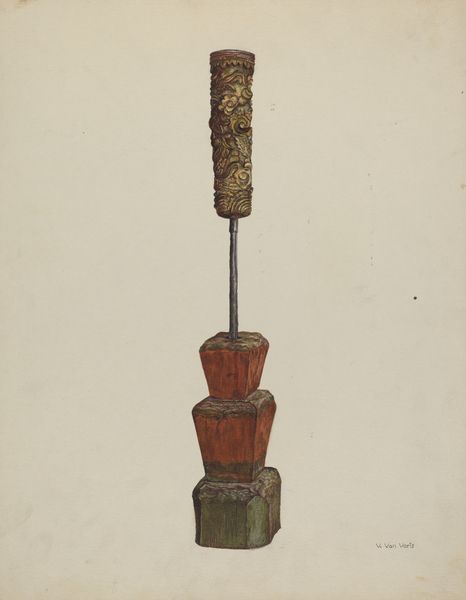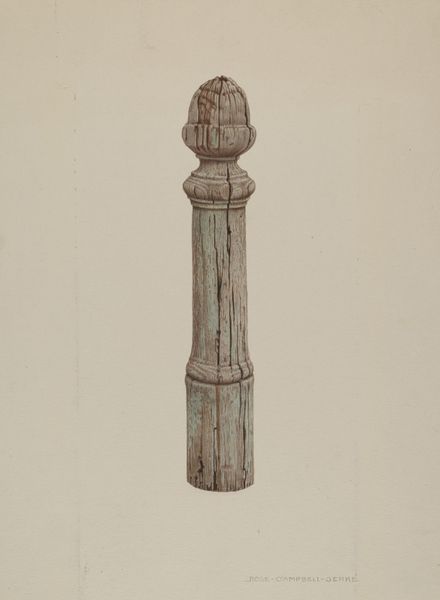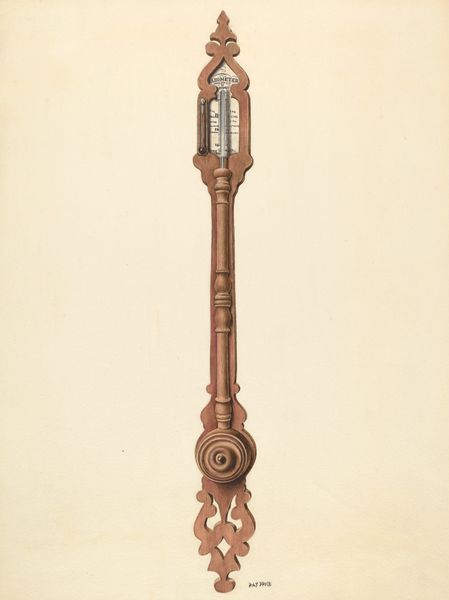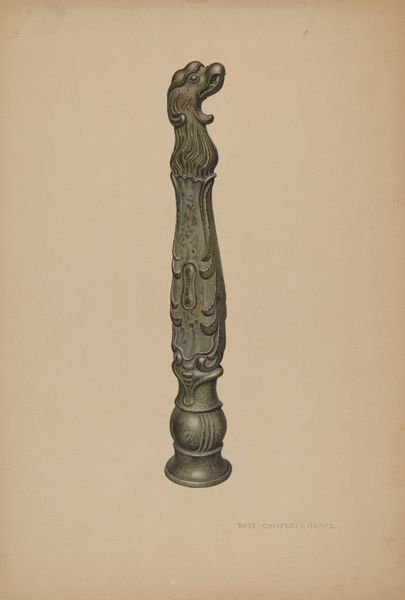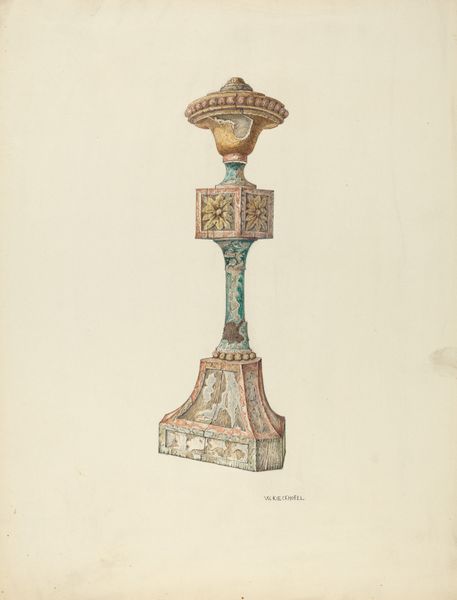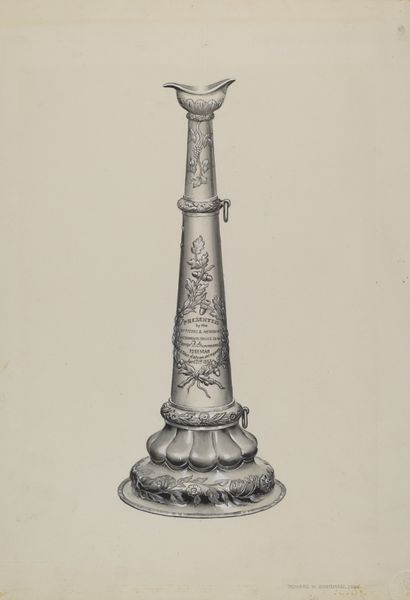
drawing, plein-air, watercolor
#
drawing
#
plein-air
#
watercolor
#
academic-art
#
watercolor
#
realism
Dimensions: overall: 35.4 x 28 cm (13 15/16 x 11 in.)
Copyright: National Gallery of Art: CC0 1.0
Emile Cero’s ‘Barber Pole’ presents us with a seemingly simple object, rendered in watercolor, yet it whispers stories of history, medicine, and culture. The red and white stripes, so iconic, are believed to originate from the medieval practice of barber-surgeons. Red symbolized bloodletting, a common medical procedure performed alongside haircuts. Consider how this symbol has traversed time. Similar striped patterns appear in ancient heraldry and religious iconography, each imbued with unique meanings of power and status. The barber pole evolved, separating its identity from medicine and becoming a beacon for grooming. It’s fascinating to see the persistence of certain motifs in visual culture. We must reflect on how the collective memory subconsciously influences the continuous resurfacing of the barber pole. The image is now disconnected from its bloodier origins, instead evoking feelings of trust, cleanliness, and community. The barber pole is an invitation to reflect on the ever-evolving dance between images and their cultural meanings.
Comments
No comments
Be the first to comment and join the conversation on the ultimate creative platform.
